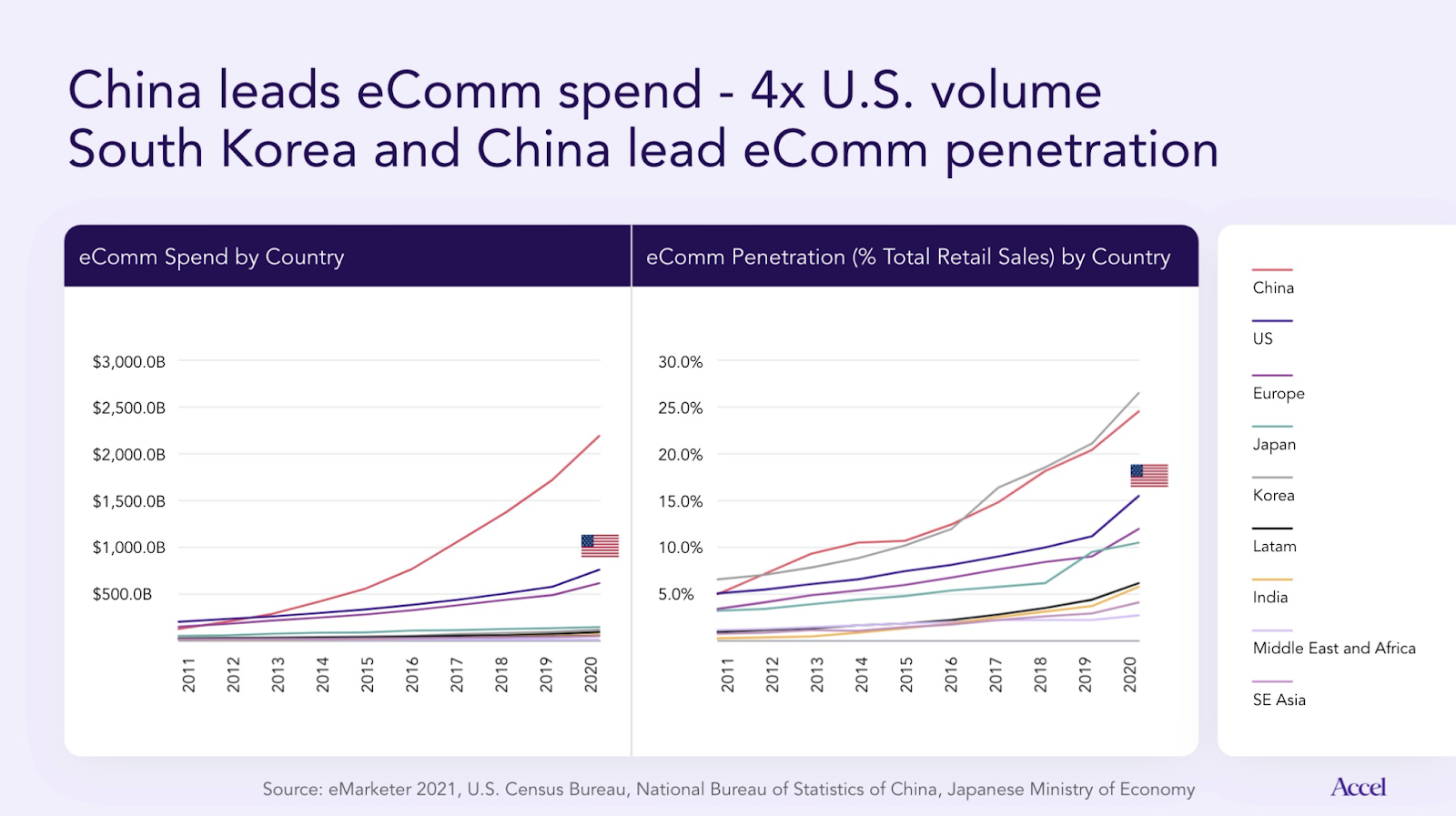5 predictions for the future of e-commerce
In 2016, more than 20 years after Amazon's founding and 10 years since Shopify launched, it would have been easy to assume e-commerce penetration (the percentage of total retail spend where the goods were bought and sold online) would be over 50%.
But what we found was shocking: The U.S. was only approximately 8% penetrated - only 8% for arguably the most advanced economy in the world!
We've had a close eye on the rate of e-commerce penetration globally ever since. Despite e-commerce growth skyrocketing over the past year, the reality is the U.S. has still only reached an e-commerce penetration rate of around 17%. During the last 18 months, we've closed the gap to South Korea and China's e-commerce penetration of more than 25%, but there is still much progress to be made.

Image Credits: Accel
It's clear that we are still in the early days of this megatrend and it is our strong conviction that it is inevitable that we will get to a point where at least half of every retail dollar is spent online over the next decade.
Below are five key predictions for what this road to further penetration will hold.
D2C retail will accelerate as merchants seek independenceMarketplaces have forged the path for e-commerce adoption among merchants of all sizes. They have raised significant capital and made the necessary investments in payments and logistics infrastructure, often subsidizing the consumer experience with free shipping or discounts to get them comfortable buying online.
The balance of power has shifted toward merchants, who previously didn't have the picks and shovels to build their own e-commerce capabilities.
In recent years, merchants have pursued options aside from these marketplace aggregators. They have sought independence, opting to pay 5%-10% of their gross merchandise value (GMV) on their own technology infrastructure rather than paying the 6% to 45% (average of about 15%) in marketplace fees. Most importantly, they have prioritized owning the relationship with their end customers, given that customer loyalty and lifetime value is becoming ever more important in a hypercompetitive online market.